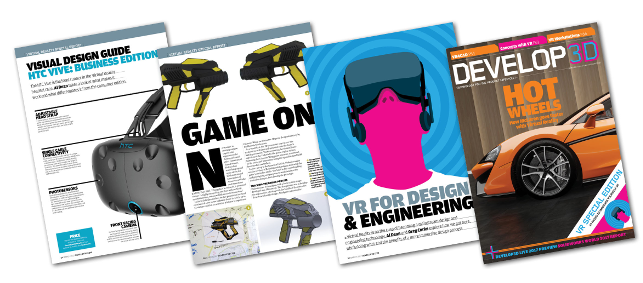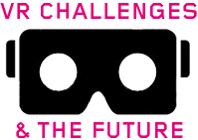Erik Kam, product marketing, ESI Group
As VR headsets (Head Mounted Displays – HMD) become more affordable and commonplace, engineering teams have the opportunity to optimise timelines for product engineering and process integration. Assembly and service checks can be performed interactively and earlier.

Placing HMDs with individual engineers and workgroups, for design integration or manufacturing or service reviews, might be a highly effective use of VR technology.
Shifting process and product integration further upstream will assure manufacturability earlier. But does an HMD for every engineer make sense?
Just using HMD to view 3D models without interaction seems like a gimmick; not unlike those 3D TVs we bought a few years ago.
If the HMD immerses the engineer in the design, allowing them to experience their decisions and test the effects of new decisions, then having the HMD provides great value.
Design for Manufacturability/Assembly (DFM, DFM/A) and planning for serviceability have long been rules or standards based. Designs are constrained using min-max specifications.
However, specification compliance is no guaranteed prevention against issues arising during manufacturing or in after-sales service. Design guidelines occasionally define conflicting criteria; they might optimise cost or delivery (timeto-market), while sub-optimising quality or safety.
These conflicts may not be identified until prototyping, or worse during launch. Interactive simulation of assembly and service operations create opportunity to identify risks and implement corrective actions without additional cost or delays in delivery.
With IC.IDO, we have 15 years of experience with VR for virtual assembly and service; our users identify issues that would have escaped notice until the physical prototype.
However, even with VR, selective application and batching of design decisions still allows late discovery of what should be minor design issues.
This may be the case when VR is only applied in centralised immersive environments—consisting of either CAVE or Powerwall—to a limited set of design scenarios; small issues discovered too late, become big issues.
With increased VR use by individuals powered by HMD, many localised issues can be identified and resolved. Some larger integration issues are still best viewed in collaborative, projected VR. HMD proliferation could breathe new life into large collaborative VR spaces.
VR when applied to in-process product development brings physical prototyping—as long promised by computer aided design—one step closer to redundancy.
esi-group.com
Stuart Thurlby, managing director, Theorem Solutions
During 2016 a wide range of new devices to visualise data have been released, including HTC Vive, Oculus Rift and HoloLens, from a group of companies in the Gaming, Social Media, Software and Entertainment industries.

The devices radically alter the price-point for deploying Virtual, Augmented and Mixed Reality experiences. The most established technology, Virtual Reality has been used for over 20 years in the Engineering and Manufacturing industries.
It has been used to assess designs aesthetically, for form and function, to determine servicing ergonomics and for training staff. The cost point though has been very high — hundreds of thousands or millions of pounds for Powerwalls and Caves. As a result VR has tended to be the preserve of large OEMs or research institutes.
These new devices take the price point for the hardware down to a few thousand pounds. However they also represent another fundamental technical change in that the graphics engine used to develop applications for these devices is Unity, which is from the world of Gaming.
This is probably not surprising given the background of the companies who provide the devices but it does represent a significant change, as Unity is not a technology normally used in the CAD and PLM world.
The graphics used by Engineering and Manufacturing are from the CAD vendors. Unity is not owned or controlled by the main CAD and PLM vendors and so represents a data format change for all users who want to use their CAD assets in the new low cost devices.
The result will be that a new set of data assets will be created, which need to be stored and managed to take advantage of the new VR headsets. That will effect not just IT staff but also engineers who need to understand how to best deploy and manage the new applications which the low cost headsets open up for the first time.
The new price point means a much broader set of use cases can now be addressed using VR, as the payback is much easier to realise.
However, thought needs to be given not just to the new use cases opened up, but to the data workflow and management, as this is not the world of CAD or PLM.
theorem.co.uk
Lon Grohs, strategy & marketing, Chaos Group
If you really think about what VR is, the potential for design is enormous. Simply because it answers the fundamental question all designers ask: what will it look like in real life?

Physical prototyping is great, but it’s also costly. With VR, designers are going to be gathering more information virtually, viewing and verifying their models at will before they hit the physical stage.
This will reduce the number of iterations teams have to go through, making it not only a cost-saving mechanism, but a fantastic creative tool as well.
The speed at which this happens will depend on how fast companies commit. We think the future is a headset at every desk, with VR utilised as a natural extension of the current workflow. But that will require studios to make the gear available to their designers and encouraging them to use it.
Making VR a common practice is the best way to usher in the benefits. The good news is that on the tech side companies are committed to supporting VR, and that support means getting to push-button simplicity. So as studios experiment and grow with this medium, it’s only going to get easier to test their designs.
One of the most exciting applications for design VR is going to come from Nurulize.
Their product, AtomView can take any 3D model and bring it into a fully interactive viewer via a V-Ray export.
The fidelity is the best I’ve seen and exposes fine details that would be lost in other solutions, like the fine stitching on a luxury car model. The system will also let designers manipulate/grab objects and look at them from any angle, at scale or even scaled up. It’s pretty impressive.
chaosgroup.com
Barry Zundel, founder & CEO, Villusion Studios
At Villusion Studios, we’ve adopted the mantra — “There’s a way to do it better… find it”, coined by Thomas Edison. It defines everything that we do, and how we look at every project. The future of design, engineering, and manufacturing will place VR as an everyday tool — as easy to use, and as natural, as any others in current toolsets.

In our discussions with many different industries regarding VR, we have seen a common thread — the need to have natural, live, and collaborative interaction with digital assets.
So much of the product process is already done digitally, that utilising VR to collaborate and review saves massive amounts of time and expense.
In order for the professional engineering and design technology industries to grow, they must be willing to embrace experimentation and change. They need to get uncomfortable, trying new technology, and investing in future tools.
They need to stop waiting for others to validate their hunches. Where there is no risk, there is no reward.
Users in these industries need to do the same — they need to be willing to take a risk and try something new. They need to push the boundaries of technology and not be afraid to fail. VR is a tool that when utilised properly in appropriate scenarios, can incredibly magnify the effectiveness and efficiency of a user, generating substantial ROI.
We need to start moving away from the flat screen, interacting with digital data in natural ways.
With Virtual reality a user or professional can manipulate data with literal physical input (motion controllers, hands, etc.).
You can pick up a model and turn it in your hand, inspecting it as if it were literally there. Decisions can be made at a fraction of the cost and time.
Tools such as The Foundry’s MODO are integral to our VR process. The ability to author our 3D content in Modo quickly and easily, and then transfer it into Unreal Engine or Unity, simplifies the VR creation process and helps us move faster and with better results.
Modo is one of those tools that adheres to our mantra. Its toolset sometimes bucks the trend in 3D, but almost always because it turns out to be the better way. It’s the main 3D tool in our belt.
As 3D tools allow us to create VR faster and with higher quality, these industries can take full advantage of the timesaving tool that VR can be.
But they must be willing to invest in it and help push its development along. VR is in its infancy right now, and the only way it will mature into what they need is for companies to mould it to their needs as it grows.
villusionstudios.com
Alban Denoyel, CEO & founder, Sketchfab
I think VR will impact design, engineering and manufacturing by bringing more creative freedom, faster execution, and better collaboration.

With the VR creation tools, you can express your ideas in 3D space from the get go, no need to start on a notepad. Your thoughts come to life in their complete dimensions, making the path from your brain to final design much shorter.
With VR, no need to wait for a 3D print to be ready before iterating on a design. You get immediate life-like results, can combine elements and drawings with no limitations, experience them with their real life scale. And the best part is that you can do this collaboratively, working together on a given design.
3D has been used in design and manufacturing for quite a while now, but experiencing 3D on a 2D monitor has always been a mere attempt at recreating the real world interactions and dimensions, in an approximate way.
The mouse was the best we could come up with to allow and simulate navigation in 3D space. Before VR we had to adapt our ideas and workflows to the constraints of a 2D screen. With VR, many of those constraints are lifted, letting design exist at its full potential. There is no mouse, you are the mouse.
sketchfab.com
Antonio Tallon, virtual reality B2B director, HTC Vive
At HTC we have had the opportunity to witness the reactions of thousands of people when first introduced to HTC Vive. It became clear from day one that this was not just another cool gadget but a transformative tool. Solutions like Tilt Brush, the VR sketching tool, not only brought a new form of art but also captured the imagination of designers, architects or engineers about the potential of VR HMDs.

Previously Sci-Fi material, VR is now a tool that allows recreating any situation with high visual fidelity, realistic immersion, real time interactions and intuitive use.
It can help in every step of the product life cycle, from its conception to prototyping, planning, manufacturing, training and final showcase.
The quick adoption of HTC Vive across different industries and use cases is a testimony about the bright future ahead. Architecture, construction, engineering, manufacturing, healthcare, media/entertainment, aerospace, defence, … VR is now positioned to play a major role in the Digital Transformation of many industries.
And it’s quite affordable too, allowing large scale deployments at a reasonable cost. That is why we believe that soon, every architect, designer or engineer will want to have an HMD next to their desk to visualise, test and validate product designs during the different stages of the product development.
For that reason, we have been working with some of the most popular CAD solutions so that designers can find in them a ‘VR mode’ to immerse themselves in their designs, analyse every angle, explore its geometry, implement changes, customise, simulate and plan the production steps, to eventually deliver an error free product, while drastically reducing the prototyping costs.
And there is no reason to worry about motion sickness, as advanced solutions like HTC Vive’s room-scale tracking, offering sub-millimetre precision and very low latency, allow a smooth and natural immersion for prolonged periods of time.
It does not end at product visualisation, as the high precision hand controllers allow tracking the finest interactions, serving as a perfect training tool to prepare for any possible situation. But tracking hands’ positions is just a first step, as we recently announced our Vive Trackers which will allow the integration of all kind of realworld objects and accessories into the virtual scene, allowing even more accurate and realistic simulations blending the two realities.
HTC Vive launched less than a year ago but has already made a major impact. After years of hype, VR is finally real, and imagination is the limit.
htc.com
This article is part of a DEVELOP3D Special Report into Virtual Reality (VR) for design, engineering and manufacturing, which takes an in-depth look at the latest developments in software and hardware and what you need to get up and running.
Everything is for a reason How McLaren Automotive unleashes VR to create faster cars with more attention to detail
Quick guide: VR enabled applications A list of what’s out there now or coming soon
HTC Vive: Getting up and running Our experience of working with HTC Vive and how to avoid common mistakes
Workstations & GPUs for VR A back to basics guide to buying hardware for Virtual Reality
The future of immersive engineering Virtual Reality (VR) is the current hot topic, but Augmented Reality (AR) and Mixed Reality (MR) is on its way. We take a look at where things are heading
Game on Amalgam creates game controllers for Holovis
VRED Pro 2017 & VR The latest release adds greater support for the HTC Vive and Oculus Rift tools
Virtalis VR4CAD Offering expertise in VR at a much more affordable level
ESI Group IC.IDO 11 ESI’s IC.ID0 is one of the most advanced Digital Mock Up tools available. With its addition of Vive support, we take a look at what the system is capable of and how it can benefit engineering
Gravity Sketch Beta An interesting take on Modelling in Virtual Reality
Google Tiltbrush A system for VR creativity that’s both cheap and capable
Oculus Medium A good contender for design experimentation
Amari Magnetar V25 This stylish workstation has been specifically designed for VR. But despite its slimsline chassis, you can still cram in incredible processing power
Nvidia Quadro P2000/P4000 Nvidia is changing the landscape of professional 3D graphics with a new family of Pascal Quadro GPUs, including a single slot ‘VR Ready’ card.

To read all the articles, as they appeared in DEVELOP3D Magazine, you can download the March Edition here.

Six industry thought leader’s views on the future of VR
Default






